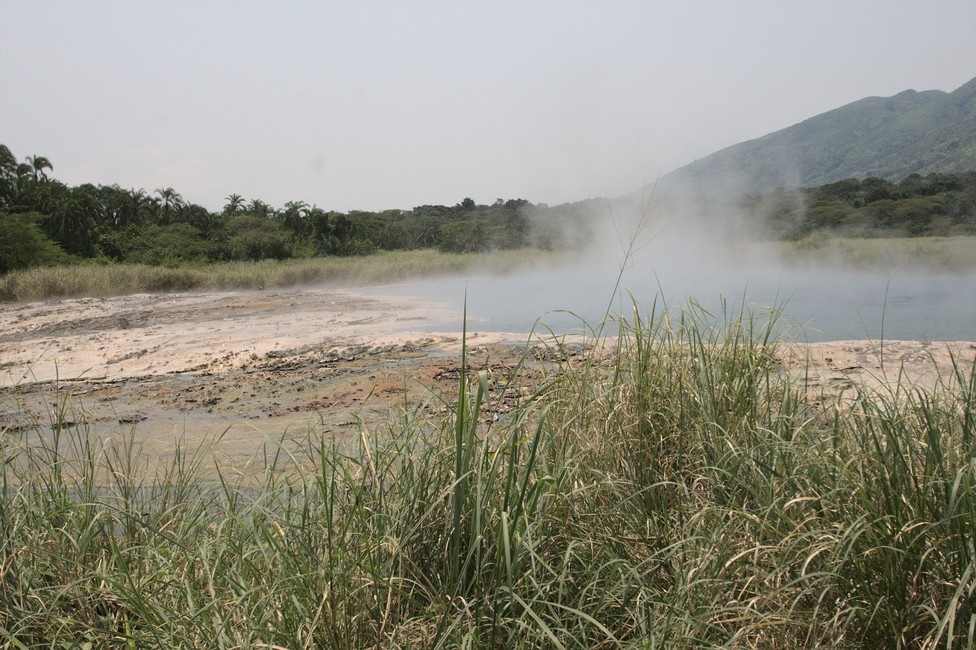Semuliki National Park
Semuliki National Park is a protected area located in western Uganda, near the border with the Democratic Republic of the Congo. It covers an area of approximately 220 square kilometers (85 square miles) and is known for its unique and diverse ecosystems. The park is part of the larger Ituri Forest, which is one of Africa’s most ancient and bio-diverse forests.

Here are some key features and information about Semuliki National Park:
- Geography and Landscape: It is situated within the Albertine Rift Valley, which is a branch of the East African Rift System. The landscape is characterized by a mix of lowland tropical rainforest, savannah, swamp, and hot springs. The park is also crossed by the Semuliki River, which meanders through the forest.
- Biodiversity: The park is renowned for its exceptional biodiversity, including both flora and fauna. It is home to over 400 bird species, making it a popular destination for birdwatchers. Notable birds found in the park include the rare Shoebill stork, Nkulengu Rail, and various hornbill species. Semuliki National Park also boasts a variety of primates, including chimpanzees, baboons, red-tailed monkeys, and black-and-white colobus monkeys.
- Hot Springs: One of the unique attractions of Semuliki National Park is the presence of hot springs. The Sempaya Hot Springs are the most famous and accessible. They include the male “Bintente” hot spring, known for its boiling water, and the female “Nyasimbi” hot spring, which is renowned for its bubbling geyser-like features.
- Wildlife and Game Drives: Although Semuliki National Park is not primarily known for its large mammals, it is still home to various wildlife species. Visitors may have the opportunity to see forest elephants, buffaloes, leopards, duikers, and pygmy hippos. Game drives can be arranged within the park to explore these animals in their natural habitat.
- Nature Walks and Hiking: The park offers several nature trails and hiking opportunities for visitors to explore its diverse ecosystems. Guided walks can be taken through the forest, allowing visitors to appreciate the flora, spot birds and primates, and learn about the traditional uses of plants by local communities.
- Cultural Encounters: The local communities surrounding Semuliki National Park, including the Batwa and Bambuti Pygmies, have a rich cultural heritage. Visitors can engage in cultural encounters and learn about their traditional lifestyle, music, dance, and crafts.
- Conservation and Research: Semuliki National Park is actively involved in conservation efforts and scientific research. It aims to protect the unique biodiversity of the area, including monitoring primate populations and studying the forest ecosystem.
When planning a visit to the Park, it is recommended to check with the relevant authorities or tour operators for the latest information on park regulations, permits, and recommended activities.
Accommodation near the Park:
Accommodation options near Semuliki National Park are limited, but there are a few lodges and campsites available in the vicinity. Here are some options:
- Semuliki Safari Lodge: Located near the park’s entrance, Semuliki Safari Lodge offers luxurious accommodation with tented cottages and spacious rooms. The lodge provides amenities such as en-suite bathrooms, verandas with views of the surrounding wilderness, and a restaurant serving a variety of meals.
- Ntoroko Game Lodge: Situated on the shores of Lake Albert, Ntoroko Game Lodge is located about 30 kilometers (18.6 miles) from Semuliki National Park. The lodge offers comfortable rooms with en-suite bathrooms, and some rooms have lake views. The lodge also features a swimming pool, a restaurant serving local and international cuisine, and a bar.
- UWA Campsite: Semuliki National Park has a basic campsite operated by the Uganda Wildlife Authority (UWA). The campsite provides basic facilities, including pit latrines and simple cooking areas. Visitors need to bring their own camping equipment and supplies.
- Community Guesthouses: There are a few community guesthouses located in the nearby villages, such as Ntandi and Kirumia. These guesthouses offer basic accommodation and the opportunity to experience the local culture and hospitality. Facilities and services are generally modest, but they provide a budget-friendly option for travelers.
It is important to note that the accommodation options near Semuliki National Park may have limited availability, especially during peak tourist seasons. It is advisable to make reservations in advance and check with tour operators or local authorities for the most up-to-date information on accommodation options and availability.